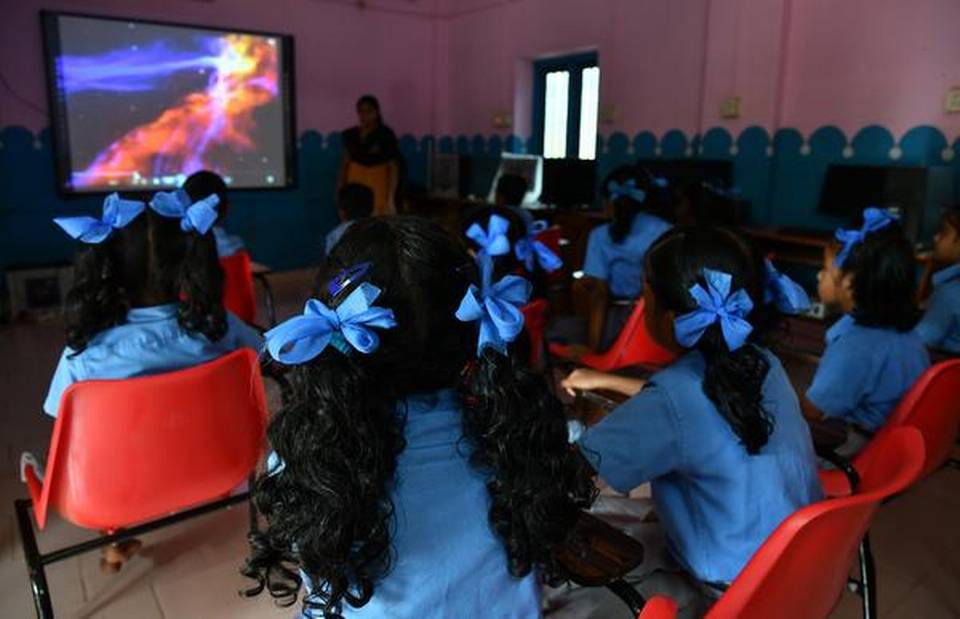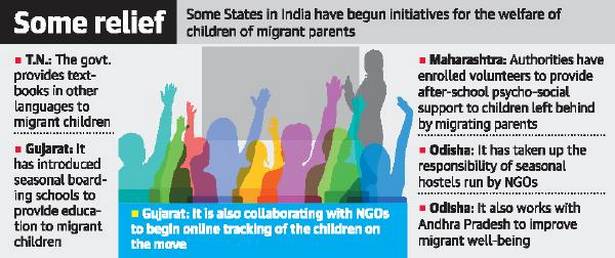UNESCO report says that 80% of seasonal migrant children in 7 cities lacked access to education, and 40% were likely to end up in work.
Literacy levels in rural households of India dip with seasonal migration, the UNESCO global education monitoring report 2019 has observed, bringing out the educational challenges thrown up by migration.
“In India, 10.7 million children aged 6 to 14 lived in rural households with a seasonal migrant in 2013. About 28% of youth aged 15 to 19 in these households were illiterate or had not completed primary school, compared to 18% of the cohort overall,” says the report. “About 80% of seasonal migrant children in seven cities lacked access to education near work sites, and 40% are likely to end up in work rather than education, experiencing abuse and exploitation.”
Construction sector
The report says that the construction sector absorbs the majority of short-term migrants. “A survey in Punjab state of 3,000 brick kiln workers in 2015-16 found that 60% were inter-State migrants. Between 65% and 80% of all children aged five to 14 living at the kilns worked there seven to nine hours per day. About 77% of kiln workers reported lack of access to early childhood or primary education for their children,” it says.
Inter-State migration rates have doubled between 2001 and 2011. “An estimated 9 million migrated between States annually from 2011 to 2016,” the report says.It also warns of the negative impact on education for children who are left behind as their parents migrate: “Test scores were lower among left-behind children aged 5-8.”
Addressing the issue
The report, however, acknowledges that India has taken steps to address the issue.“The Right to Education Act in 2009 made it mandatory for local authorities to admit migrant children. National-level guidelines were issued, allowing for flexible admission of children, providing transport and volunteers to support with mobile education, create seasonal hostels and aiming to improve coordination between sending and receiving districts and states,” it says.
The report says some State governments have also taken steps for migrant children’s education. It, however, observes that most interventions are focused on keeping children in home communities instead of actively addressing the challenges faced by those who are already on the move.
It also talks of a failed initiative: “A pilot programme used on brick kiln sites from 2010-2011 in Rajasthan to track the progress of out-of-school children did not improve learning in any substantial way. Teachers on the sites cited culture, language, lifestyle, cleanliness and clothing as major barriers between them and the kiln labour community. Teacher and student absenteeism were rampant.”
The report sees the growth of slums and informal settlements — where schools are often scarce — due to migration as a challenge. “18% of the students displaced by a riverfront project in Ahmedabad dropped out and an additional 11% had lower attendance,” it says, citing an example.
The report shows there is only one urban planner for every 1,00,000 people in India, while there are 38 for every 1, 00,000 in the United Kingdom.
Article Credit :- The Hindu



Pingback: UNESCO and Amrita Vishwa Vidyapeetham launch campaign on menstrual health and hygiene - SLSV - A global media & CSR consultancy network